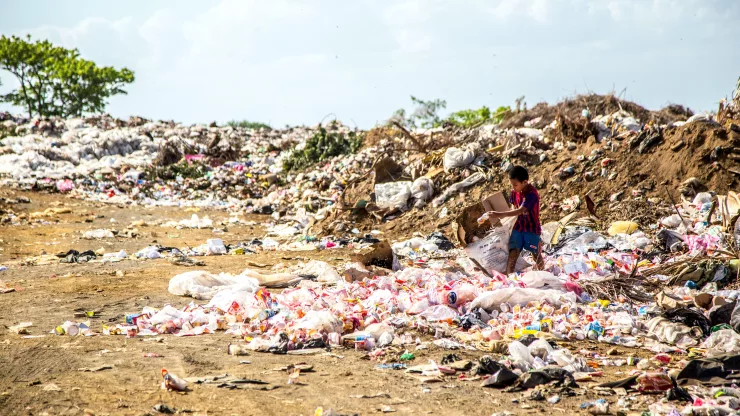Noise pollution is a growing problem in urban areas around the world.
While it is often considered an annoyance for humans, it can have significant impacts on the wildlife that also call cities home.
This article will explore the effects of noise pollution on urban wildlife, the causes of this pollution, and ways to mitigate its impact.
Jump to Section
Introduction
What is Noise Pollution?
Noise pollution is any sound that is unwanted or disruptive to human or animal life.
It can come from a variety of sources, including transportation, construction, and human activities.
While some level of noise is inevitable in urban areas, excessive noise can have negative effects on both humans and wildlife.
The Effects of Noise Pollution on Humans
Excessive noise can cause a range of health problems in humans, including hearing loss, stress, and sleep disturbance.
It can also affect cognitive function and increase the risk of cardiovascular disease.
To mitigate these impacts, many cities have implemented noise regulations and noise-reducing measures such as noise barriers and acoustic insulation.
The Impact of Noise Pollution on Urban Wildlife
Understanding Urban Wildlife
Urban wildlife refers to animal species that live and thrive in cities and other urban areas.
These can include birds, mammals, reptiles, and insects.
Urban wildlife has adapted to living in the city, but noise pollution can disrupt their behavior and have negative impacts on their health.
How Noise Pollution Affects Urban Wildlife
Changes in Behavior
Noise pollution can disrupt the behavior of urban wildlife in several ways.
For example, it can cause animals to avoid certain areas, change their feeding patterns, or alter their communication methods.
This can have negative impacts on their overall health and survival.
Changes in Population
In addition to changes in behavior, noise pollution can also lead to changes in the population of urban wildlife species.
For example, some species may avoid areas with high levels of noise, while others may thrive in these areas.
This can lead to imbalances in the ecosystem and even extinction of certain species.
Examples of Urban Wildlife Affected by Noise Pollution
There are many examples of urban wildlife that are affected by noise pollution.
For example, birds may change their songs to be heard over traffic noise, while bats may avoid areas with high levels of noise pollution.
Other species, such as mice and rats, may thrive in noisy urban environments.
| Species | How Noise Pollution Affects Them |
|---|---|
| Birds | Changes in song patterns |
| Bats | Avoidance of noisy areas |
| Mice | Thrive in noisy environments |
Causes of Noise Pollution in Urban Areas
Transportation Noise
Transportation is one of the main sources of noise pollution in urban areas. This can come from cars, buses, trains, and airplanes.
While newer vehicles are designed to be quieter, there are still many older vehicles on the road that produce high levels of noise.
Construction Noise
Construction is another major source of noise pollution in urban areas. This can include noise from jackhammers, heavy machinery, and construction vehicles.
While construction is necessary for building and maintaining cities, it can have negative impacts on urban wildlife.
Industrial Noise
Industrial activities such as factories and power plants can also produce high levels of noise pollution.
While these activities are often located outside of urban areas, they can still have negative impacts on wildlife in nearby areas.
Human Noise
Finally, human activities such as music, shouting, and fireworks can also contribute to noise pollution in urban areas.
While these activities may seem harmless, they can have significant impacts on urban wildlife.
Mitigating the Effects of Noise Pollution on Urban Wildlife
Noise Barriers
One way to mitigate the effects of noise pollution on urban wildlife is to install noise barriers such as walls and fences.
These barriers can help to reduce the amount of noise that reaches nearby wildlife habitats.
Urban Planning
Another way to reduce noise pollution is through urban planning.
This can include measures such as creating green spaces and parks, limiting the amount of traffic in certain areas, and designing buildings with noise-reducing features.
Regulations and Enforcement
Many cities have implemented noise regulations to limit the amount of noise that can be produced in certain areas.
These regulations are often enforced through fines and other penalties.
Public Education and Awareness
Finally, public education and awareness can help to reduce noise pollution in urban areas.
This can include campaigns to encourage people to reduce their noise levels and to be more mindful of the impact of noise pollution on urban wildlife.
Conclusion
The Importance of Addressing Noise Pollution on Urban Wildlife
Noise pollution is a growing problem in urban areas around the world.
While it is often considered an annoyance for humans, it can have significant impacts on the wildlife that also call cities home.
By addressing this issue, we can help to ensure the health and survival of urban wildlife species.
Future Directions in Addressing Noise Pollution
There is still much work to be done to address noise pollution in urban areas.
Future directions could include developing new noise-reducing technologies, implementing more effective regulations and enforcement measures, and increasing public awareness of the issue.
FAQ
What are the main sources of noise pollution in urban areas?
The main sources of noise pollution in urban areas include transportation, construction, industrial activities, and human activities such as music and shouting.
How does noise pollution affect urban wildlife?
Noise pollution can disrupt the behavior of urban wildlife and lead to changes in their population.
For example, it can cause animals to avoid certain areas, change their feeding patterns, or alter their communication methods.
What can be done to reduce noise pollution in urban areas?
There are several ways to reduce noise pollution in urban areas, including installing noise barriers, implementing urban planning measures, enforcing noise regulations, and increasing public awareness of the issue.
I’m a nature enthusiast and creator of Metro Wilds and have spent years exploring the great outdoors.
With a passion for environmental conservation and sustainability, I have dedicated my career to writing about the beauty and wonders of nature, as well as the threats facing our planet.
Contact me at [email protected] for assistance.





